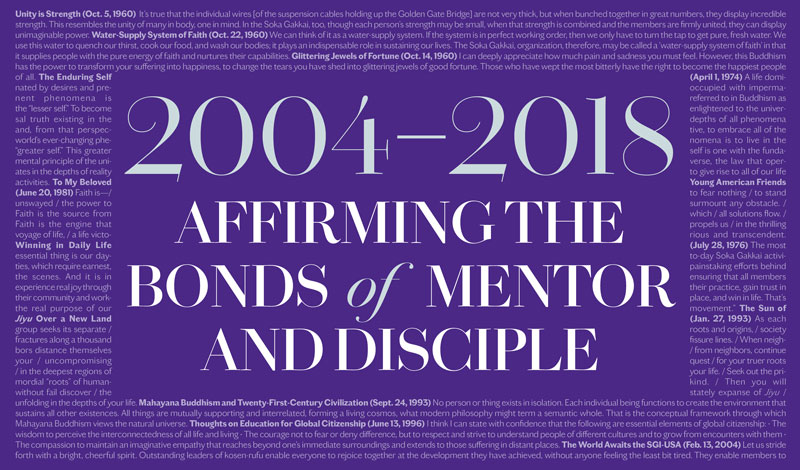To see the actual timeline please click here.
The 21st century arrived on a tide of information. “The digital age” saw the rise of the smartphone, a palm-sized portal into events unfolding from every angle, everywhere on earth, at any time of day.
Conversing with study department leaders in the ’90s, Ikeda Sensei touched on modern society’s distinguishing features and foremost demands: “In the past, the world that people were aware of was circumscribed. … But now people have become anonymous citizens of vast countries. They are more and more aware that their destiny is inextricably linked with the destiny of the entire human race. While people worry about the direction in which their country and humankind as a whole are heading, they are uncertain how to express their personal views on such matters or what action to take to influence outcomes.[1]
On Feb. 13, 2004, SGI-USA representative leaders met with Sensei, where he discussed prospects for the 21st century and offered a blueprint for dynamic expansion. A month later, SGI-USA announced a new organizational structure, consolidating its 10-zone system into five geographic zones.
From this meeting was born the Statistics Department, which celebrates 20 years this September. When SGI-USA reported its first effort to record its membership, Sensei responded, saying, “Since I am the president of the SGI, I am also a member of the SGI-USA’s statistics,” and asked his staff to send his membership card. Representatives responded immediately, saying: “We consider both you and Mrs. Ikeda to be the first members of the SGI-USA.”[2]
The department’s establishment proved vital to the first major youth-led campaigns in the 21st century. SGI-USA gathered some 30,000 youth at Rock the Era festivals across the country (July 2010), introduced more than 3,000 youth to the practice (2013) and gathered 50,000 youth for the Lions of Justice Festivals in nine U.S. cities (September 2018). Each campaign saw the emergence of ever-greater numbers of capable youth standing up as protagonists of change in their communities across the country. Along the way, SGI-USA further refined its organizational structure in June 2007, going from five geographic zones to three territories, a change that Sensei said signaled “the opening of the second act of kosen-rufu,” a conviction he affirmed in a message: “The time has arrived for new and substantial progress in American kosen-rufu.”[3]
It was in June 2010, just ahead of the Rock the Era festivals, that Sensei chose to not attend that month’s Soka Gakkai headquarters leaders meeting. Per his request, two calligraphies were introduced: “Great Cherry Tree” and “Great Mountain,” the latter bearing the inscription: “My friends, I pray that your faith / will remain unshaken by any storm.”[4] His message to the meeting read, “Now is the time for me to put the finishing touches to my work and leave everything to you.”[5] Sensei not attending the meeting marked a turning point in the kosen-rufu movement, in which the disciples took the lead in advancing kosen-rufu.
In the United States, youthful disciples responded with the broad-based initiatives mentioned. They also launched the Ikeda Wisdom Academy in January 2013, the same year as the founding of the Hall of the Great Vow for Kosen-rufu in Shinanomachi, Tokyo.
Leaving everything to the youth, Sensei did put the finishing touches on his life’s work, completing his epic 30-volume novel, The New Human Revolution, in 2018, at the age of 90.
In the novel’s 30th and final volume, Sensei stresses to a core of youth leaders:
The true test for disciples is not when they are striving while receiving daily guidance and instruction from their mentor. That’s a period of training. Their real test is when their mentor is no longer directly taking leadership. … Stand up resolutely in my stead! You must each become a “Shin’ichi”![6]
Advancing with the awareness that “We are the SGI-USA of the World,” young leaders of kosen-rufu rose up with their mentor to assume responsibility for the advancement of kosen-rufu in his stead.
Feb. 4, 2004

Social networking service Facebook launches as TheFacebook. With its focus on transparency, the ability to upload photos and join groups, and see a timeline of posts from friends, it quickly became the largest social network in the world.
Feb. 13, 2004
‘The World Awaits the SGI-USA’
Ikeda Sensei met with SGI-USA leaders at the Makiguchi Memorial Hall in Hachioji, Tokyo. In discussing the development and significance of kosen-rufu in America, he emphasized the importance of prayer, men respecting women, unity and increasing the numbers of those who have become truly happy. He concluded his remarks by encouraging everyone to bring their lives to a magnificent completion.
In response, the SGI-USA established its Statistics Department to ensure that each member was accounted for and supported.
March 1, 2007
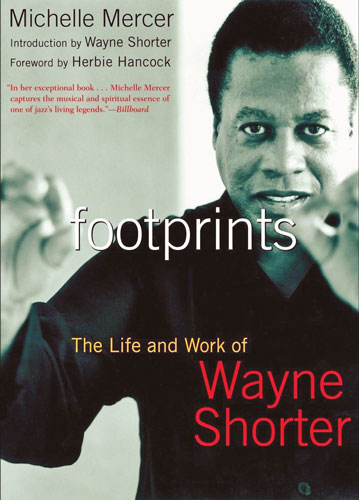
Wayne Shorter’s biography, Footprints: The Life and Work of Wayne Shorter, is published. In it, he speaks of his decades-long career as a jazz saxophonist and composer, as well as the transformative power of his Buddhist practice. Shorter joined the SGI in 1973, and together with fellow jazz legend Herbie Hancock met with Ikeda Sensei on several occasions. A discussion among the three was published as Reaching Beyond. He passed away on March 2, 2023.
June 24, 2007
‘The Second Act of Global Kosen-rufu’
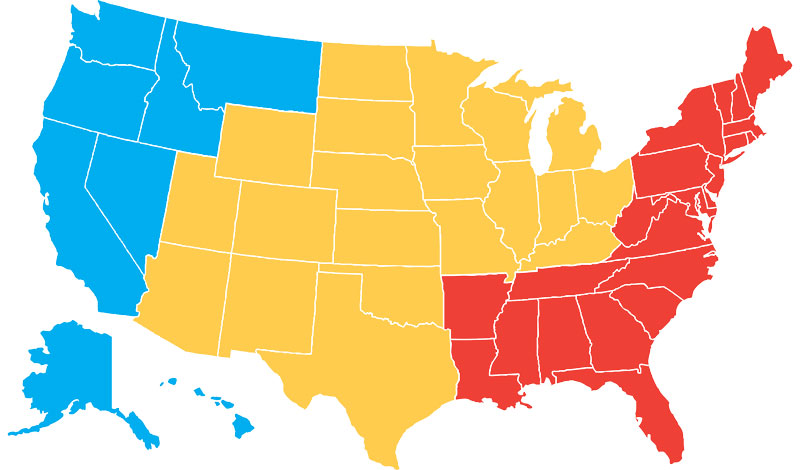
On June 24, 2007, SGI-USA announced its new organizational structure composed of three territories—East, Central and West—to better support and care for the members. With this, Ikeda Sensei stated, “The time has arrived for new substantial progress in American kosen-rufu” (July 6, 2007, World Tribune).
Signaling this new act in the drama of kosen-rufu in America, the SGI-USA carried out its first major united propagation effort since the second priesthood issue in 1991, welcoming some 7,000 new members that year.
Sept. 7, 2008

After becoming a Buddhist in April 1983, major league baseball player Orlando Cepeda transformed his life completely. As a testament to a life well lived, he was inducted into the Baseball Hall of Fame in 1999 and, in 2008, the San Francisco Giants honored him with a nine-foot statue at AT&T Park. Cepeda had met Ikeda Sensei on multiple occasions, including in 2006 when he presented Sensei with a San Francisco Giants jersey printed with the number 200 in celebration of his mentor’s his 200th academic honor. Cepeda passed away on June 28, 2024.
July 2010
Rock the Era

In September 2009, SGI-USA kicked off “Rock the Era” youth activities to restart SGI-USA’s youth performing groups. These activities culminated in July 2010 with Rock the Era festivals commemorating the 80th anniversary of the Soka Gakkai and the 50th anniversary of Ikeda Sensei’s inauguration as third Soka Gakkai president and first visit to America.
Some 30,000 youth gathered at these festivals held in Philadelphia, Chicago, Long Beach, Calif., and Honolulu. The youth pledged to achieve Sensei’s vision of a world without nuclear weapons and spread the hope-filled philosophy of Nichiren Buddhism to every neighborhood in America (see July 23, 2010, World Tribune, p. 3). In his message to the festivals, Sensei wrote, “Your youth festival is truly a significant, historic event, bringing together the passion and power of youth who burn with the spirit to open a new era for America” (Aug. 6, 2010, World Tribune, p. 3).
Sept. 22, 2010
Ikeda Youth Ensemble Named
In response to the emergence of the thousands of youth who performed at the Rock the Era festivals months before, Ikeda Sensei named the SGI-USA youth performing groups the Ikeda Youth Ensemble.
In the Soka Gakkai’s early days, Sensei fostered various performing groups, personally purchasing and donating instruments for the youth to play and giving them a mission to use music to break through the walls that divide people.
He called out to SGI youth performers throughout the world: “Members of the Music Corps, Fife and Drum Corps and Chorus Groups: You are acclaimed! You are superb! Your inspiring performances lift the spirits of all who hear them” (May 21, 2010, World Tribune, p. 5).
May 29, 2011
Five Guidelines for the SGI-USA Youth Division
Delighted with the development of the SGI-USA youth division, Sensei bestowed five guidelines to them:
1) Be the youth of America who eternally inherit the Gakkai spirit of the oneness of mentor and disciple!
2) Be the youth of America who create an exemplary youthful Soka Gakkai with the unity of many in body, one in mind!
3) Be the youth of America who illuminate the darkness of the age as champions of propagation!
4) Be the youth of America who courageously refute the erroneous and reveal the true based on the writings of Nichiren Daishonin!
5) Be the youth of America who build an ideal society of peace in the world as pioneers of the Mystic Law!
Jan. 26, 2013
Ikeda Wisdom Academy Established
At a study conference with youth representatives from the U.S. and Canada, an advanced youth study program was introduced. Ikeda Sensei named it the Ikeda Wisdom Academy. To develop a current of youthful successors firmly rooted in Buddhist study, its study curriculum explored The Wisdom of the Lotus Sutra series and Sensei’s lectures on “The Opening of the Eyes,” “The Heritage of the Ultimate Law of Life” and other key writings by Nichiren Daishonin.
In his message to the conference, Sensei wrote: “As youth, you face all sorts of difficulties, and wrestle each day with worries and problems. Precisely for this reason, it is crucial that you stand up with a great vow and strive to achieve a fundamental goal. Once you decide what is fundamental, nothing that happens will sway you, and you can grow by leaps and bounds” (Feb. 2, 2013, World Tribune, p. 2).
Nov. 3, 2013
3,000 Youthful Successors Emerge
In 2013, the SGI-USA youth led an unprecedented effort to introduce 3,000 young people to the practice in a single year—a goal they achieved that Nov. 3. Upon hearing the news, Ikeda Sensei responded: “That is incredible! Please give my best regards to the members of the SGI-USA!” (Nov. 15, 2013, World Tribune, p. 2). To solidify the foundation of faith in these new bodhisattvas, the members united to enable 3,000 youth to take the 2013 Introductory Exam that December.
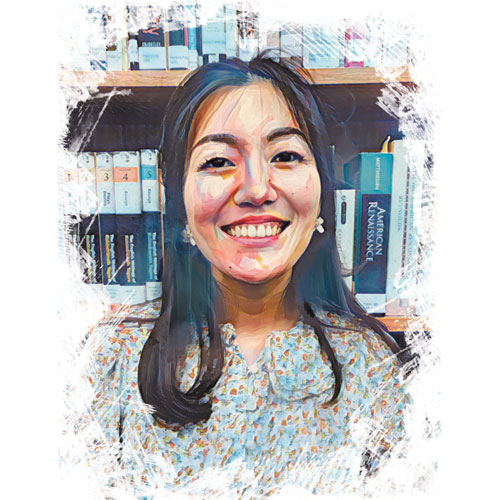
I Want to Advance Kosen-rufu
by Lillian Koizumi
Watertown, Mass.
I came to Massachusetts from Taiwan as a struggling teenager, but my depression and challenges followed me.
In 2007, my then-boyfriend joined the SGI and began hosting meetings at our apartment. During those meetings, I quietly hid in the bedroom to avoid the members.
By 2013, my father was facing bankruptcy and illness. Every night, I went to sleep hoping I wouldn’t wake up.
One day, as I was waiting at the Buddhist center, a member invited me in for an intro-to-Buddhism meeting, which I reluctantly joined. People opened up about their struggles, but they didn’t look like they were struggling. Curious, I decided to experiment with chanting.
I immediately felt a difference. I wanted to live. I wanted to wake up in the mornings. I felt there was something more to my life.
I joined the SGI-USA on Jan. 1, 2014, and immediately after, a senior in faith encouraged me to read The Human Revolution. I was moved by how Josei Toda, Ikeda Sensei and the members gave their lives to spread this Buddhism. I appreciated them, but I still didn’t consider Sensei my mentor.
Then, in Discussions on Youth, I read: “Even if you think you’re hopeless and incapable, I know you’re not. I have not the slightest doubt that each of you has a mission” (p. 27). Someone believed in me, and I understood why Sensei was my mentor.
My determination today is to make Sensei’s name widely known in the peacebuilding community. I want people to think of Daisaku Ikeda when they hear the word dialogue. And I want to live each day, with a vast state of life, advancing kosen-rufu where I stand.
November 2013
Hall of the Great Vow for Kosen-rufu
The year 2013 concluded with the opening of the Hall of the Great Vow for Kosen-rufu in Tokyo. It is where members the world over come together, in rich diversity, to chant Nam-myoho-renge-kyo and refresh their own great vow for kosen-rufu, sharing the same heartbeat as the three eternal mentors, Tsunesaburo Makiguchi, Josei Toda and Daisaku Ikeda.
Oct. 28, 2014
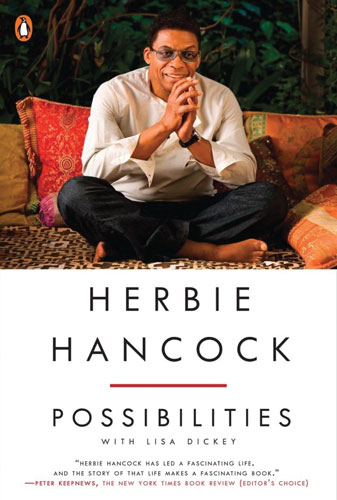
American Jazz legend and longtime SGI member Herbie Hancock publishes a memoir. In it, he details his spiritual journey and how Buddhism inspires him both creatively and personally.
2015
Four Mottoes for Kosen-rufu in America
To mark the 55th anniversary of worldwide kosen-rufu and the appointment of a new SGI-USA general director, Ikeda Sensei offered four mottoes for kosen-rufu in America:
America of Courage
America of Capable People
America of Unity
Be the Model for Worldwide Kosen-rufu.
In a message on this fresh departure, Sensei shared: “The SGI-USA’s progress serves as a model for and gives hope to the entire world. The greater the development of the SGI-USA, the greater the momentum will be for the progress and expansion of worldwide kosen-rufu” (Oct. 2, 2015, World Tribune, p. 2).
Aug. 15, 2015
‘Voice of Courage and Hope’
Celebrating its 51st anniversary, the World Tribune was redesigned and expanded to a 12-page issue. Celebrating this new departure, Ikeda Sensei gave the newspaper a byname to serve as its eternal touchstone: Voice of Courage and Hope.
Feb. 1, 2018
Lions of Justice Group Travels to Japan
Ahead of the 50,000 Lions of Justice Festival, 201 SGI-USA youth traveled to Japan for a training course. Sensei named them the Lions of Justice Group.
In a message, he reminded the youth of their unique mission for kosen-rufu, writing: “Stay strong no matter what hardship or challenge may arise in life, embracing every difficulty as laborious, yet necessary tasks along the path of achieving a great human revolution. Prevail over these adversities by chanting daimoku as fiercely as the lion’s roar, thereby defining the days of your youth by the success you yourself achieve. And in so doing, expand the bounds of a united network of peace and happiness together with your friends and fellow members, reaching skyward without constraint in high spirits” (March 2, 2018, World Tribune, p. 7).
Aug. 6, 2018
The New Human Revolution Concludes

Ikeda Sensei penned the final installment of his 30-volume work, The New Human Revolution, which details the history of the Soka Gakkai and SGI since his inauguration as third president in 1960. The novel comprises 6,469 installments, making it the longest-running series in a Japanese newspaper.
Sept. 23, 2018
50,000 Lions of Justice Ushering in an Era of Hope and Respect!
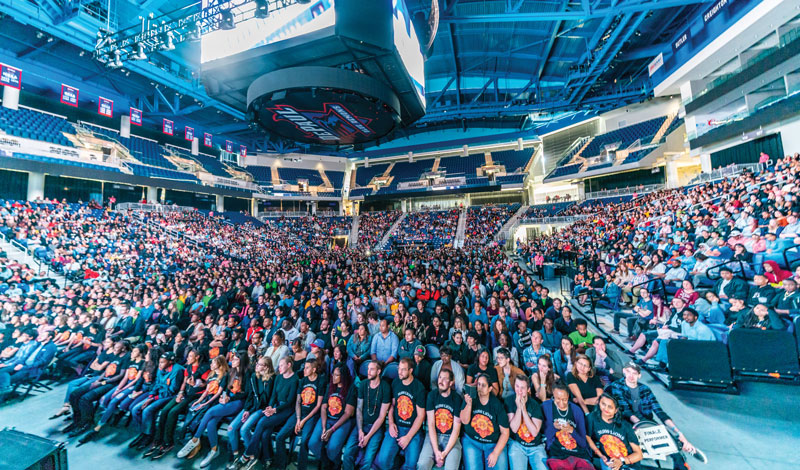
In 2016, as rifts in American society deepened, the SGI-USA youth determined to gather 50,000 young people across the country, pledging to build a society of hope and respect for all people.
On Sept. 23, 2018, some 50,000 young people gathered in nine cities: Anaheim, Calif., Atlanta, Chicago, Dallas, Honolulu, Miami, Newark, N.J., Phoenix and San Jose, Calif. In his message to the festival, Sensei wrote in part: “I urge you, the youth of America, whom I deeply cherish, to proudly forge ahead to create a better society and a better world. Regardless of the trials you may face, please advance boldly along the great path of personal transformation we call human revolution, with the conviction that ‘when I change, my environment will change’” (Oct. 19, 2018, World Tribune, p. 2).
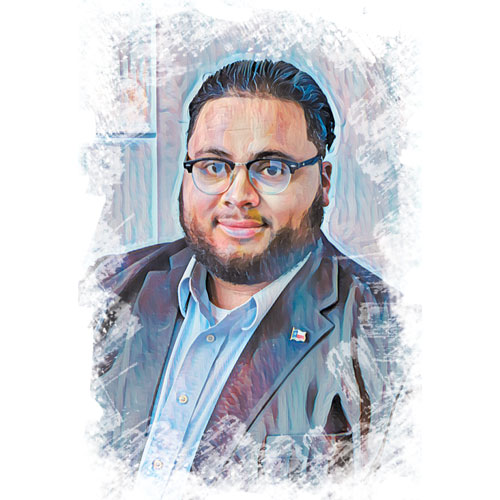
Leading With Prayer
by Josef Gaudiesus
Dallas
I was 20 years old, a junior in college with dreams of becoming an elite football coach, when I took on responsibility as the young men’s leader for Texas-Oklahoma Zone in 2017.
Around this time, the 50,000 Lions of Justice Festival was announced, and I was thrust into a whirlwind of youth activities toward it. Young and new to leadership, I struggled with uniting and with my own judgment toward others. And I definitely rubbed some people the wrong way with my attitude.
In February 2018, I attended the SGI Youth Training Course in Tokyo and Kansai with 200 other SGI-USA youth. At first, I didn’t understand why we were there, but the local members, beaming with life condition, welcomed us at each step. I learned that their spirit was Ikeda Sensei’s spirit—to use every opportunity to encourage others.
When I returned, I still had my struggles. I graduated from university and moved to Dallas with no job, money or place to live. As a leader, I constantly had to reflect on myself. When I took a certification exam to become a teacher, I failed it.
Reading the publications during this time, I was reminded again and again of the power of chanting Nam-myoho-renge-kyo. With each setback, I went back to prayer and Sensei’s guidance in the publications and redetermined to show victory to the members.
On Sept. 23, 2018, we held a successful Lions of Justice event! And on my third attempt, I passed the exam. I am now a high school science teacher and position coach for the football team. I support kids with different struggles and experience games where we lose. But I think of what Sensei would do, and leading with prayer, I’m never deadlocked.
August 15, 2024, World Tribune, pp. 26–33
You are reading {{ meterCount }} of {{ meterMax }} free premium articles

